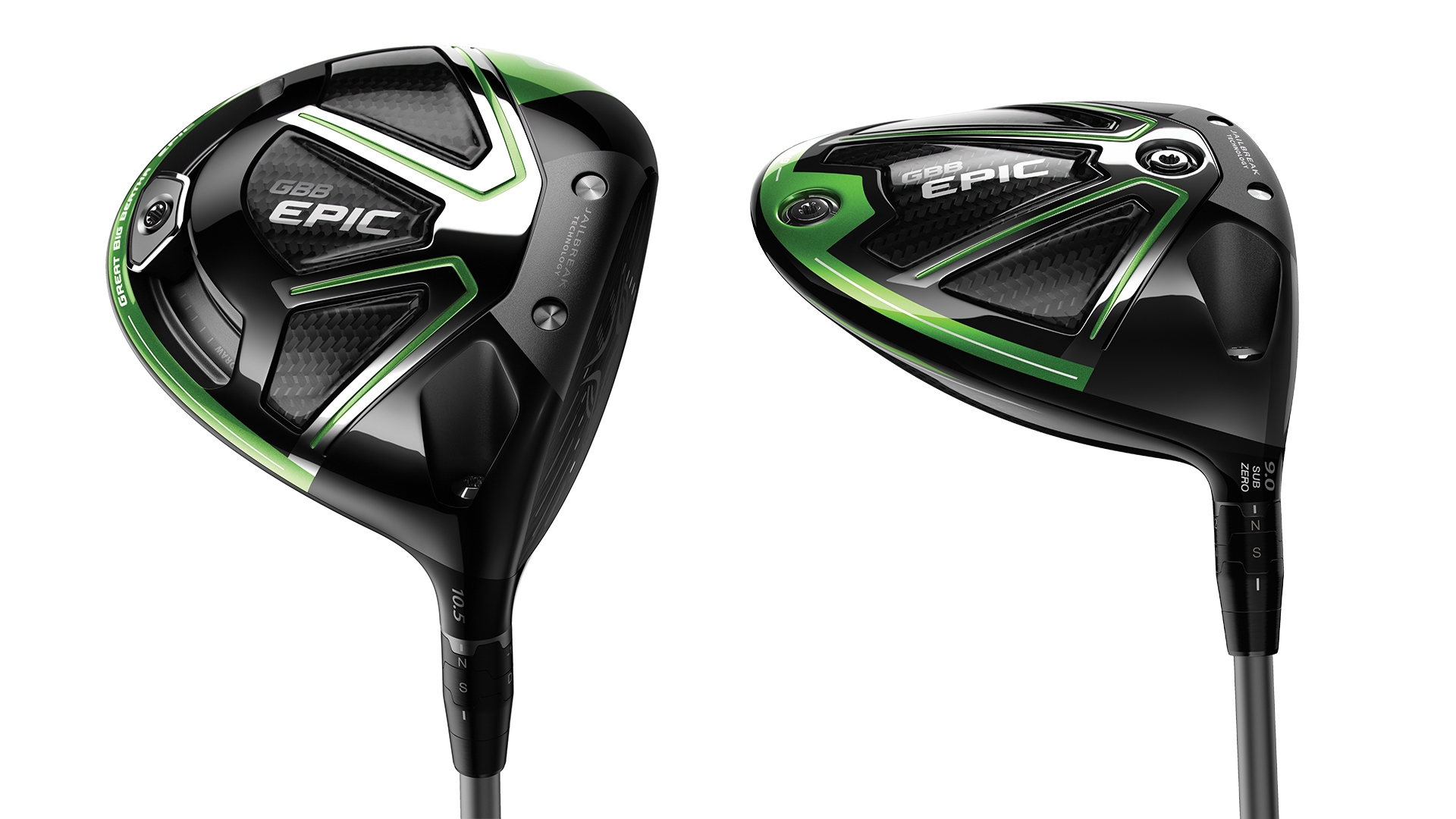[toc]
Before You Buy: Read Golf Wedges Explained
When you understand the role golf wedges play in your game you’ll learn how to select the best wedges to improve your game.
Statistics show that among all the shots played during a round of golf, 25% of them are played using a wedge golf club.
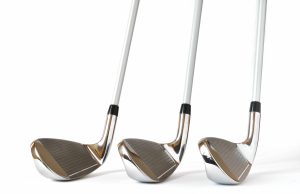
There is a wide variety of wedges you could purchase, thus, you need to do proper research as you find a wedge that will satisfy your needs.
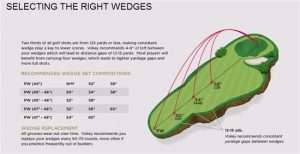
Courtesy of Titleist[/caption]
Types of Golf Wedges
When you are looking to buy your first set of golf clubs, there are four types of wedges that include the gap wedge, lob wedge, sand wedge, and the pitching wedge. The pitching wedge is the most commonly used and, in most cases, it’s included as a typical set of irons in the sale, while the other three types are sold separately.
Pitching wedge
The pitching wedge is the most commonly used wedge. It’s commonly used for full shots into greens and some chip shots that are longer. Their loft is 44 to 48 degrees. Sets found in recent times have a stronger and lower lofted pitching wedge.
This ensures that the wedge blends in with the golf irons that are longer-hitting. An average player hits the ball accordingly, it can travel for about 110 to 125 yards. Before purchasing the other types of golf wedges, it’s crucial to know using the pitching wedge.
Gap wedge
The gap wedge fills the gap created between the pitching wedge and the sand wedge. It may also be referred to as an attack wedge or a utility wedge.
Their loft is 50 to 53 degrees and is mostly used for fuller shots. It bridges the distance gap and you can do your normal swing when you are away from the pin in between 80 and 100 yards.
Sand wedge
The sand wedge was designed to slide through tall grass and sand. It does this by having a sole that is wider and heavier. Its loft degree ranges from 54 to 58 degrees.
Before the lob wedge was invented, the sand wedge was the highest lofted club and was used for chips and bunker shots around the green.
The ball is quickly popped with the sand wedge to prevent the ball from being in contact with sand and a tall glass. The high trajectory limits the spin of the ball to prevent it from landing on the green and roll away on the green.
Lob wedge
Lob wedges are the newest among other wedge designs. It’s highly lofted with around 60 to 64 degrees. The golfers can produce more height and spin. The shots delivered are near the green. They are mostly used for flop shots, bunker shots and to hit chips.
Components of a Golf Wedge
Loft
The loft is the angle created between an imaginary vertical line and the face of the wedge. the loft of a wedge dictates the trajectory and how far the ball will fly. Among other clubs, golf wedges have the highest loft.
When you purchase different wedges, it’s important to ensure that the difference between the wedges is at least four degrees. For instance, if the loft of your pitching wedge is 48 degrees, then the gap wedge should have a loft of 52 degrees, the sand wedge should be 56 degrees and that of the lob wedge should be 60 degrees.
When the loft is higher, your shot is likely to be elevated. The ball, therefore, takes a higher flight with less distance. When choosing a set of wedges, you should ensure that a big gap doesn’t exist in the lofts between the first wedge and the lowest lofted iron.
Bounce
This is determined by how the bottom of the club (Club’s sole) rests on the surface. it’s therefore, the club’s area that hits the turf, making the club to bounce through the surface under the ball once an impact occurs. The elements that make the club’s sole make up the bounce. These elements include the leading edge, sole width, bounce angle, camber of the wedge and rocker.
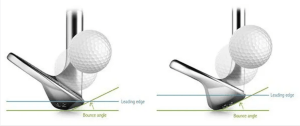
Nevertheless, when most people talk about bounce, they refer to the bounce angle. The bounce angle is obtained from the leading edge to the point where the sole meets the ground. Bounce angle is very important as it prevents the wedge from digging into turf or sand. The momentum of the club is therefore stopped through the ball. There are three types of golf wedges concerning bounce.
Understanding the Bounce of a Golf Wedge
Low bounce wedge
These are wedges that bounce at an angle of four to six degrees. This is considered a low bounce. These wedges are suited for players who prefer firmer turf conditions, sweep the ball and take a shallower divot. They are suitable for bunkers with little sand.
Mid bounce wedges
These wedges have a bounce angle of 7 to 10 degrees. They are highly versatile and are suitable for various swing types and a wide range of conditions.
High bounce wedges
These wedges have a bounce angle of more than 10 degrees. This means that the leading edge will sit higher when the sole rests on the ground. They are suitable for bunkers with deep fine sand. The players who use this wedge dig at impact and take deep pivots.
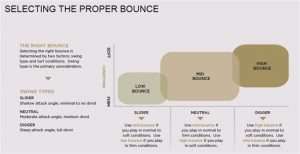
Courtesy of Titleist
Other Aspects of a Golf Wedges
Sole and sole grind
The sole of a wedge is its bottom that makes contact with the ground. The sole grind is, therefore, the additional shaping given to the sole mostly around the toe or the heel. Due to the benefits offered by the sole grind, most manufacturers are now providing a wide range of sole grinds combined with the standard wedge sole. A machine is used to grind the soles for them to suit specific shots and turf conditions. Different shapes are created to suit a specific purpose.
For example, there are heel grinds. These heel grind takes the sole’s heel portion down, lowering it such that the club sits lower to give the required shots. Different letters are used to show the different sole grinds of a wedge. For example, there are; ‘C’, ‘S’ or ‘U’. A club fitter will show you the type of grind that suits you depending on the pitch shot and chip shot styles.
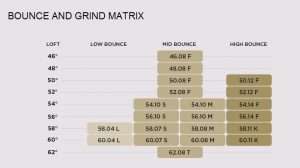
Courtesy of Titleist
Grooves
These are the lines that are seen cut into the face of the club’s head. In the past, the grooves were deeper, but in recent times, they are not so deep, as advised by the United States Golf Association (USGA). USGA changed the rule by indicating that the grooves had an unfair advantage to the golfers as they created more backspin.
Treads on a tire assist the tire to grab the road accordingly, the grooves on the wedges work similarly. They assist the wedge to grab the golf ball accordingly. When a contact is made between the ball and the green, a ball stopping power is produced.
As a result of the new rule set by USGA, two types of grooves on the golf wedges came up.
Vintage finish
Grooves with the vintage finish rust in a way that the inherent sound and feel of the metal are complemented. As the wedge is being used over time, the groove adopts the character that’s fit for your style of play.
Laser-etching
Groves that are laser-etched optimize the friction of the ball to give a maximum spin. These grooves, however, don’t take the character of your striking tendencies as they age.
Finishes
A distinct look and color of a wedge are provided by the finish provided. Your taste and personal preferences determine the kind of finish you want for your wedge. Although your personal preference is important, it’s crucial to check how your desirable finish wears over time.
The appearance and color of a wedge made of Chrome and Nickel are more durable. Raw and unplated finishes are designed to rust or wear as they age. Some golfers prefer this as it will improve friction and spin. For the darker finishes, the paint wears over time, especially on the face and face. This gives them some wear marks that are also desirable to some golfers.
The information above has provided a background of the components of wedges and the types that are available. Let this information be a guide as you decide on buying wedges. This will ensure that you will make a wise decision and that the selection that you will make, will be the one that best suits you.


